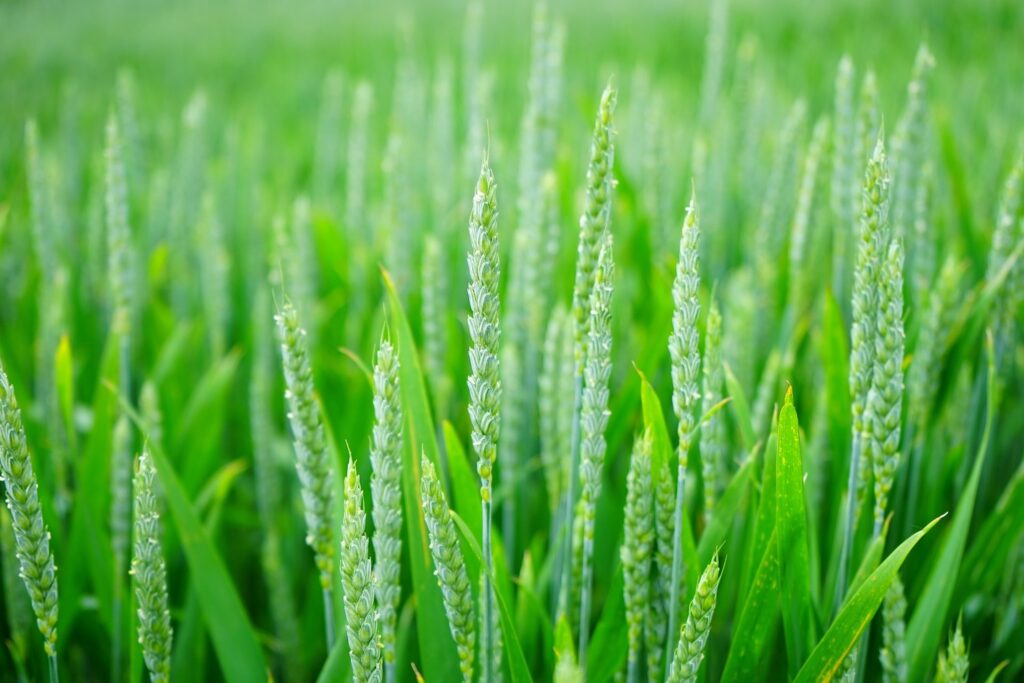Building biomass drives higher yields
24th March 2022
Ten years since the Yield Enhancement Network (YEN) was launched, growers and agronomists are gaining a clearer understanding of how biomass drives yield potential.
A decade of YEN research shows that while light and water availability remain critical limiting factors to yield potential, successful crops are those with optimal biological growth to convert the energy available into grain.
“It’s about getting crops ready to make the most of the season given to you,” says Hutchinsons development manager, Jennie Watson. “Maximising biomass puts crops in a prime position to convert sunlight into yield, even if that yield potential is limited by factors beyond your control.”
Research into the seasonal variability of yields shows 50% is typically due to the weather, but 25% is the “farm factor” relating to agronomy during the crucial foundation and construction stages, she notes. “Growers must be adaptable to the season.”
Healthy soil, with good organic matter, high water and nutrient retention, is essential to support high biomass crops through the season, so underlying issues must be rectified, she adds. Early spring, when soils are moist and warming up, is an ideal time for soil testing, so talk to your agronomist about the services available.
Focus on biomass pays off
Aberdeenshire farmer and Gardiner ICM (part of Hutchinsons Group) agronomist Iain Learmonth won Gold for achieving the best percentage of potential cereal yield in last year’s YEN, with a 9ha field of LG Skyscraper that yielded 107% of its potential 12.1 t/ha.
Farming 485ha north of Ellon, alongside advising farms in the area, he recognises how maximising biomass drives higher yields.
“Much of my focus is on building biomass and retaining tillers early in the season to push the crop’s photosynthetic capacity through the main summer growing period.”
Healthy soil is vital to support high-yielding crops, he agrees. “Our soils are very variable in places and can be thin, but organic matter is quite high at 5-10%, which helps water availability, nutrient retention and crop health. In the full soil analysis we’ve done within YEN our soils score highly.”
Mr Learmonth’s 2021 YEN field was sown in late September, using a traditional plough and power-harrow combination drill system.
“Because of the mixed soil types, we use variable seed rates produced in Omnia. Rates typically average 350-375 seeds/m2, which sounds high, but winter can arrive quickly here. Tiller and plant counts last spring showed we achieved a fairly even plant stand of 250-275/m2.”
A run of dry springs in recent years have highlighted the importance of early nutrition, Mr Learmonth continues. Crops usually receive phosphate and potash fertiliser with seed, then manganese and copper at the three leaf stage. Nitrogen, sulphur and magnesium are applied as soon as NVZ rules allow in late February, before a growth regulator/phosphite/trace element mix is applied around growth stage 30.
“We’ve done plenty of tissue testing within YEN and understand the likely issues. Manganese and copper deficiency are often problematic due to high soil organic matter.”
Winter wheat typically receives 230kg N/ha, in four splits, with three-quarters applied by GS 31 to help tiller retention, he says.
Protecting green leaf
Once a strong canopy is established, leaves must be kept green and actively photosynthesising as long as possible to “harvest” solar radiation, Mr Learmonth says.
“In wheat, Septoria is our main concern, and Skyscraper is fairly poor (rated 4.9), so I tend to use a robust four-spray fungicide strategy. With the loss of chlorothalonil, Septoria control is more difficult and you can’t afford to leave gaps in the programme.”

